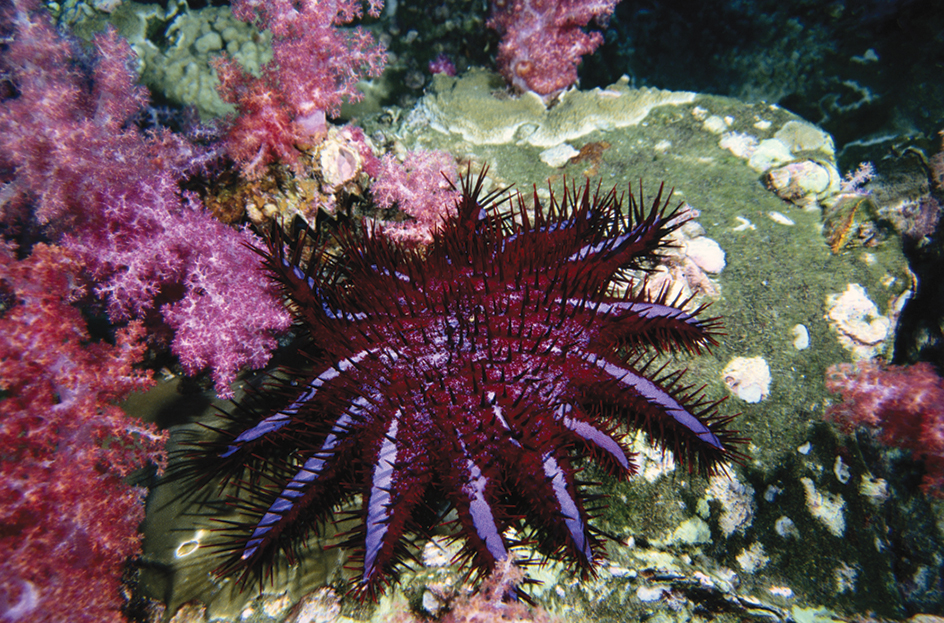Echinoderm << ih KY nuh durm >> is any of a major group of spiny-skinned sea animals. There are thousands of species (kinds) of echinoderms. Starfish, brittle stars, sand dollars, sea urchins, and sea cucumbers are among the most common types. The echinoderm phylum (large group of living things) is the only major phylum made up entirely of sea animals.

Echinoderms have an internal skeleton made of calcium carbonate, a chalky material. Their spines are a part of the skeleton. Adult echinoderms have radial symmetry. This means their body parts are arranged around the center of the animal like the spokes of a wheel around the hub. Echinoderm bodies are usually divided into five sections, with the mouth in the center.
Echinoderms are the only animals that have a water vascular system. This system makes use of water-filled tubes to move the body and to transport food and wastes through it. The water enters the body through a sievelike plate. The water vascular system ends in structures called tube feet. The tube feet project from the body in rows. Echinoderms use the tube feet for moving, feeding, breathing, and sensing. The outer tip of each tube often forms a suction disk for gripping hard surfaces.
Most echinoderms reproduce by shedding eggs into the water. The eggs develop into larvae (young) that swim freely. The larvae have bilateral symmetry (two similar halves). The larvae sink to the ocean bottom and change into the adult, radial form.
See also Brittle star; Sand dollar; Sea cucumber; Sea lily; Sea urchin; Starfish.
